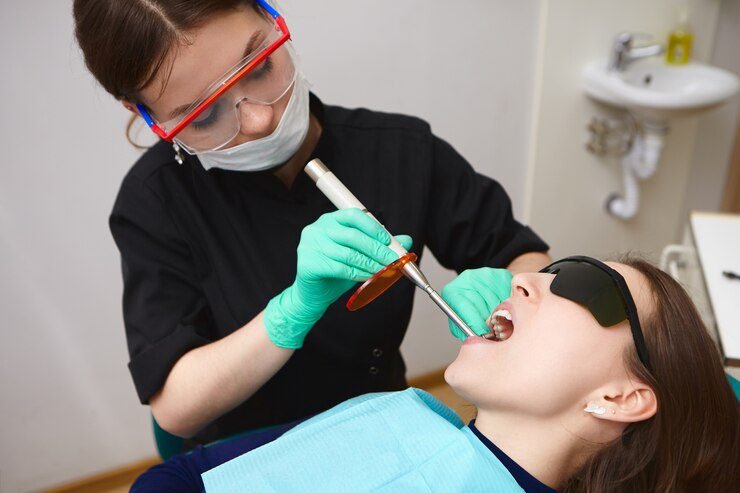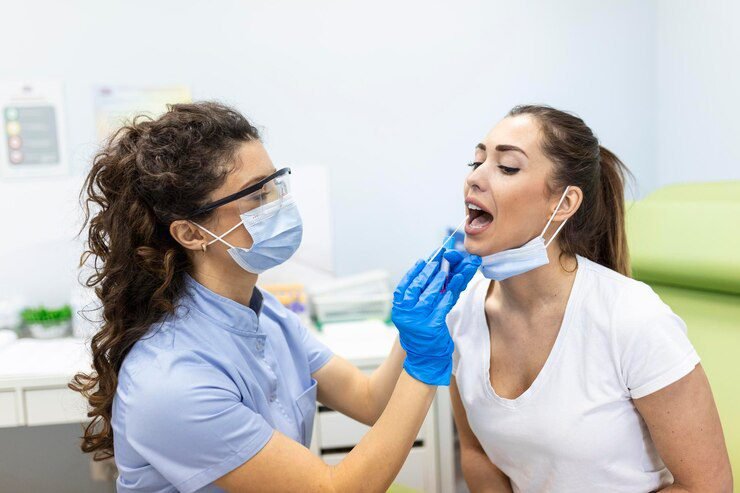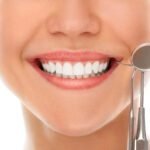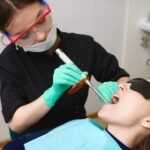Table of Contents
Heading 1: Understanding the Importance of Dental Health during the COVID-19 Pandemic

Maintaining good oral health has always been crucial, but its significance has become even more pronounced during the COVID-19 pandemic. As we adapt to the new normal, it is important to understand the impact that dental health can have on our overall well-being. Numerous studies have shown that oral health is closely linked to our immune system, cardiovascular health, and even cognitive function. Neglecting dental care during these challenging times can potentially exacerbate existing oral health conditions, leading to more severe complications and unnecessary pain.
While it may be tempting to postpone dental visits due to concerns about the virus, it is essential to remember that dental clinics have implemented stringent measures to ensure the safety of patients and staff. Dental professionals have been following the guidelines set by health authorities, such as the World Health Organization (WHO) and the Centers for Disease Control and Prevention (CDC), to minimize the risk of COVID-19 transmission. By adhering to meticulous infection control protocols, dental clinics are now among the safest healthcare environments. Therefore, it is crucial to prioritize dental health and not neglect routine check-ups and necessary treatments. Taking proactive steps to maintain oral health can greatly contribute to our overall well-being and quality of life during these uncertain times.
Heading 2: The Measures Implemented by Dental Clinics to Ensure Patient Safety

Dental clinics have implemented several measures to ensure the safety of their patients during the ongoing COVID-19 pandemic. These measures aim to mitigate the risk of virus transmission and create a safe environment for both patients and dental professionals.
First and foremost, dental clinics have been screening patients for COVID-19 symptoms and risks. Prior to their appointment, patients are typically required to fill out a questionnaire about their health status and potential exposure to the virus. By identifying high-risk individuals or those who may be infected, dental clinics can take appropriate precautions and potentially reschedule non-emergency appointments.
Furthermore, dental clinics have implemented strict adherence to infection control protocols and sterilization procedures. These protocols include thorough cleaning and disinfection of dental instruments, treatment rooms, waiting areas, and frequently touched surfaces. Dental professionals also wear appropriate personal protective equipment (PPE), such as gloves, masks, and face shields, to minimize the risk of virus transmission. This ensures that patients can receive necessary dental care in a safe and sanitized environment.
Heading 3: Screening Patients for COVID-19 Symptoms and Risks

Screening patients for COVID-19 symptoms and risks is an essential step in ensuring the safety of both the patients and the dental healthcare providers. Dental clinics have implemented strict screening protocols to identify patients who may be at risk of COVID-19 infection. These protocols involve asking a series of questions about the patient’s recent travel history, exposure to individuals with COVID-19, and any symptoms they may be experiencing. Some clinics may also perform temperature checks before allowing patients to enter the facility.
By conducting thorough screenings, dental clinics can determine whether a patient needs to be rescheduled or referred to an appropriate healthcare facility for further evaluation and testing. This helps to minimize the risk of transmission within the dental setting and ensures that patients receive the appropriate care they need. It is crucial for patients to provide accurate information during the screening process to ensure their safety and that of others in the dental clinic.
Furthermore, dental healthcare providers also play a role in assessing their own health and ensuring that they are not showing any symptoms of COVID-19. Regular self-screening, including checking for symptoms such as fever, cough, and shortness of breath, is essential for the safety and well-being of both the patients and the dental professionals. Dentists and other staff members who are experiencing symptoms or have been in contact with individuals suspected or confirmed to have COVID-19 should follow the recommended guidelines, including self-isolation and seeking medical advice. This helps to prevent the spread of the virus and protects the dental clinic environment as a whole.
Overall, the screening of patients for COVID-19 symptoms and risks is a critical step in maintaining a safe dental clinic environment. By identifying individuals who may be at risk of infection, dental healthcare providers can take the necessary precautions to minimize the spread of the virus and provide safe and effective dental care. Both patients and dental professionals have a responsibility to be vigilant in their health assessments and to provide accurate information during the screening process. This collaborative effort is crucial in ensuring the well-being of everyone involved in dental healthcare during the COVID-19 pandemic.
Heading 4: Strict Adherence to Infection Control Protocols and Sterilization Procedures
Strict adherence to infection control protocols and sterilization procedures is crucial in dental clinics, especially during the COVID-19 pandemic. These measures are implemented to ensure the safety of both patients and dental professionals, minimizing the risk of cross-contamination and the spread of infectious diseases.
Dental clinics follow rigorous protocols recommended by regulatory authorities such as the Centers for Disease Control and Prevention (CDC), the World Health Organization (WHO), and the American Dental Association (ADA). These protocols include regular and thorough disinfection of all surfaces, equipment, and instruments using hospital-grade disinfectants. Dental professionals are trained on the proper use of personal protective equipment (PPE) and the correct sterilization procedures for instruments and equipment. In addition, high-touch areas such as waiting rooms and reception areas are regularly cleaned and sterilized to maintain a clean and safe environment for all patients.
Adherence to these infection control protocols and sterilization procedures helps ensure a hygienic and safe environment within dental clinics. By implementing these measures, dental professionals can minimize the risk of transmission of not only COVID-19 but also other contagious diseases. Patients can have confidence in visiting their dentist, knowing that their well-being and safety are of utmost importance.
Heading 5: Managing Patient Flow and Social Distancing in Dental Clinics
In light of the ongoing COVID-19 pandemic, dental clinics have had to implement various measures to manage patient flow and ensure adequate social distancing in their facilities. These precautions are crucial in minimizing the risk of virus transmission and protecting the health and safety of both patients and dental staff.
One of the primary strategies employed by dental clinics is the implementation of appointment-only systems. By scheduling appointments, clinics can stagger patient visits and minimize the number of individuals in the waiting area at any given time. This helps to maintain social distancing and reduce the risk of overcrowding.
Additionally, dental clinics have introduced measures to facilitate social distancing within their premises. This may involve rearranging waiting areas to ensure adequate spacing between chairs, marking designated areas for standing or queuing to maintain appropriate distance, and limiting the number of individuals accompanying patients to their appointments.
Furthermore, dental clinics are adopting efficient patient flow management techniques to minimize the interaction and proximity of patients. This may include streamlining administrative processes to reduce waiting times, utilizing electronic forms and paperwork, and implementing technology solutions for appointment reminders and check-ins.
These measures, combined with comprehensive infection control protocols and the use of personal protective equipment by dental professionals, aim to provide a safe environment for patients to receive essential dental care while adhering to social distancing guidelines. The collective implementation of these strategies promotes the well-being of both patients and dental practitioners during these unprecedented times.
Managing patient flow and social distancing in dental clinics is crucial for ensuring the safety of both patients and staff. Here’s a comprehensive guide on how to achieve this:
| Managing Patient Flow and Social Distancing in Dental Clinics | Strategies |
|---|---|
| 1. Pre-screening and Scheduling | – Conduct pre-screening assessments for COVID-19 symptoms and exposure risk when scheduling appointments. |
| – Stagger appointment times to minimize the number of patients in the waiting area and allow for thorough disinfection between appointments. | |
| 2. Telehealth and Virtual Consultations | – Offer telehealth or virtual consultation options for non-emergency appointments to reduce in-person visits and minimize crowding in the clinic. |
| – Provide instructions and guidance on proper oral hygiene and home care during virtual consultations. | |
| 3. Enhanced Cleaning and Disinfection Protocols | – Implement rigorous cleaning and disinfection protocols for all surfaces, equipment, and high-touch areas in the clinic. |
| – Use EPA-approved disinfectants effective against SARS-CoV-2 and follow manufacturer guidelines for proper use and contact times. | |
| 4. Limited Waiting Area Occupancy | – Limit the number of patients and accompanying individuals allowed in the waiting area to maintain social distancing. |
| – Arrange seating to ensure at least six feet of distance between individuals and remove unnecessary items like magazines and toys. | |
| 5. Physical Barriers and Signage | – Install physical barriers such as plexiglass shields at reception desks and check-in counters to reduce direct contact between staff and patients. |
| – Place clear signage throughout the clinic to remind patients of social distancing guidelines, hand hygiene practices, and mask requirements. | |
| 6. Personal Protective Equipment (PPE) | – Provide appropriate PPE such as masks, face shields, gloves, and gowns for dental staff and patients as recommended by public health authorities. |
| – Encourage patients to wear masks and perform hand hygiene upon entering the clinic. | |
| 7. Streamlined Check-in and Check-out Processes | – Implement contactless check-in and check-out processes, such as online forms and payments, to minimize physical interaction and paperwork handling. |
| – Use mobile or electronic communication methods to send appointment reminders and follow-up instructions to patients. | |
| 8. Patient Education and Communication | – Educate patients about the clinic’s safety measures and infection control protocols through various channels, including websites, social media, and signage. |
| – Encourage patients to reschedule appointments if they experience COVID-19 symptoms or have been exposed to someone with COVID-19. | |
| 9. Staff Training and Monitoring | – Provide comprehensive training to dental staff on infection control practices, PPE use, and proper patient communication during the pandemic. |
| – Monitor staff adherence to safety protocols and provide regular updates and reinforcement as needed. | |
| 10. Continuous Assessment and Adaptation | – Regularly assess the effectiveness of implemented measures and adjust protocols based on evolving guidelines, community transmission rates, and patient feedback. |
| – Stay informed about local and national public health recommendations and collaborate with relevant authorities to ensure compliance and best practices. |
Heading 6: Use of Personal Protective Equipment (PPE) by Dental Professionals
Personal Protective Equipment (PPE) plays a vital role in safeguarding the health and well-being of both dental professionals and patients during the COVID-19 pandemic. Dentists, dental hygienists, and dental assistants are at increased risk of exposure to respiratory droplets and aerosols generated during dental procedures. To minimize this risk, dental professionals adhere to strict protocols and use appropriate PPE.
The use of PPE by dental professionals typically includes wearing face masks, protective eyewear, gloves, and protective clothing. These measures act as a barrier, preventing the spread of infectious diseases and reducing the risk of cross-contamination. The face masks, such as N95 respirators, provide filtration of particles and droplets, protecting healthcare providers from respiratory infections. Protective eyewear, like face shields or goggles, shield the eyes from splashes and droplets. Gloves create a barrier between the dental professional’s hands and potentially infectious materials. Additionally, disposable gowns or jackets can be worn to reduce the risk of contamination from dental aerosols.
Properly fitted and worn PPE not only protects the dental professionals but also helps ensure the safety of patients. By minimizing the risk of exposure to pathogens, the use of PPE instills confidence in patients who may have concerns about visiting the dentist during these uncertain times. Dental clinics prioritize the use of high-quality PPE and follow evidence-based guidelines to maintain a safe environment for both the dental team and patients.
Heading 7: The Role of Telemedicine in Dental Care during the Pandemic
Telemedicine has played a crucial role in dental care during the COVID-19 pandemic, providing a safe and convenient option for patients to receive necessary dental consultations and follow-up care without leaving their homes. Through virtual appointments, dentists can assess dental conditions, provide recommendations, and even prescribe medications if needed. This has not only helped minimize the risk of exposure to the virus but has also ensured that individuals can maintain their oral health during these challenging times.
One of the main advantages of telemedicine in dental care is its ability to provide remote triage services. Dentists can evaluate patients’ symptoms and determine the urgency of their dental concerns. By doing so, they can prioritize patients requiring immediate in-person care, thus reducing the strain on dental clinics and minimizing the potential spread of COVID-19. Telemedicine also allows for effective communication between dentists and patients, enabling the provision of necessary guidance on oral hygiene practices, pain management, and preventive measures. By leveraging technology, dental professionals can provide timely assistance and support to their patients, ensuring that their oral health needs are met despite the limitations imposed by the pandemic.
Heading 8: Recommendations for High-Risk Individuals and Vulnerable Populations
High-risk individuals and vulnerable populations need to take extra precautions when it comes to their dental health during the COVID-19 pandemic. These groups include older adults, people with underlying medical conditions, pregnant women, and children. It is crucial for them to stay updated on the specific recommendations given by their healthcare providers and dental professionals.
One important recommendation for high-risk individuals and vulnerable populations is to prioritize emergency and essential dental care. This means that regular check-ups and non-urgent procedures may be postponed to reduce the risk of potential exposure to the virus. However, it is essential to seek immediate dental care if experiencing severe pain, infection, or trauma to prevent further complications. Dental professionals are well-equipped to provide safe and appropriate treatment for these urgent cases while implementing strict infection control protocols and following the necessary guidelines to ensure patient safety during the pandemic.
Heading 9: Precautionary Measures for Patients Visiting the Dentist
When visiting the dentist during the COVID-19 pandemic, it is essential for patients to be aware of the precautionary measures in place to ensure their safety. Dental clinics have implemented a range of protocols to minimize the risk of virus transmission and create a safe environment for patients.
One of the primary precautionary measures is the screening of patients for COVID-19 symptoms and risks. Dental clinics typically conduct pre-appointment screenings to identify any potential cases before patients enter the facility. This may involve asking questions about symptoms, recent travel history, and exposure to individuals with confirmed or suspected COVID-19. By identifying and isolating high-risk individuals, dental clinics can effectively prevent the spread of the virus within their premises. Additionally, some clinics may also perform temperature checks at entry points to further ensure the safety of patients and staff.
Strict adherence to infection control protocols and sterilization procedures is another key precautionary measure implemented by dental clinics. These protocols, which have always been standard in dental practice, have been intensified to combat the spread of COVID-19. Dentists and dental staff rigorously follow guidelines set by regulatory bodies and professional associations, such as the American Dental Association (ADA), to maintain a high level of sterilization and disinfection. From regular handwashing and the use of personal protective equipment (PPE) to the thorough cleaning of instruments and surfaces, these measures are crucial in preventing the transmission of the virus and ensuring patient safety.
(Note: The section provides an overview of the precautionary measures implemented by dental clinics for patients’ safety during the COVID-19 pandemic. It emphasizes the screening of patients for COVID-19 symptoms and risks and the strict adherence to infection control protocols and sterilization procedures. The following paragraphs will further explore other precautionary measures, such as managing patient flow and social distancing, the use of PPE, and the adoption of telemedicine in dental care.)
Heading 10: The Importance of Regular Dental Check-ups and Preventive Care
Regular dental check-ups and preventive care play a crucial role in maintaining optimal oral health. These routine visits allow dentists to detect any potential issues early on, preventing them from progressing into more serious and costly problems. Additionally, preventive measures, such as professional cleanings and fluoride treatments, help to keep teeth and gums healthy, reducing the risk of cavities, gum disease, and other oral health issues.
During a regular dental check-up, the dentist will thoroughly examine your teeth and gums, looking for signs of decay, gum inflammation, or other abnormalities. They may also take X-rays to assess the health of your teeth and underlying bone structure. These check-ups provide an opportunity for dentists to educate patients on proper oral hygiene practices and offer personalized advice on maintaining oral health.
By prioritizing regular dental check-ups and preventive care, individuals can take proactive steps towards achieving and preserving a healthy smile. It is recommended that individuals visit their dentist at least twice a year for routine check-ups and cleanings. These appointments not only help maintain oral health but also contribute to overall well-being, as there is a strong link between oral health and systemic health. So, don’t neglect your dental health – schedule those regular check-ups and take the first step towards a healthier and happier smile.
Heading 11: Addressing the Fear and Anxiety of Going to the Dentist during the Pandemic
Addressing the Fear and Anxiety of Going to the Dentist during the Pandemic
The COVID-19 pandemic has undoubtedly brought forth a surge in fear and anxiety among individuals considering a visit to the dentist. The potential exposure to the virus and uncertainties surrounding infection transmission have understandably instilled apprehension in many patients. However, it is crucial to address these fears and provide reassurance about the safety measures implemented by dental clinics to protect their patients.
First and foremost, it is important to highlight that dental clinics have been implementing rigorous infection control protocols to ensure patient safety even before the pandemic. These protocols have now been enhanced to include specific measures to combat COVID-19. Dental professionals are required to follow strict guidelines recommended by health authorities, such as the use of personal protective equipment (PPE), thorough sterilization of instruments and surfaces, and proper ventilation within the clinic premises.
One way that dental clinics are addressing patient fears is through transparent communication. By clearly explaining the measures being taken and sharing information about the steps followed to minimize the risk of COVID-19 transmission, dental professionals can help alleviate some of the anxiety associated with dental visits. Additionally, offering virtual consultations or telemedicine options for initial assessments can provide a safe and convenient way for patients to discuss their concerns with their dentists before scheduling an in-person appointment. By prioritizing patient education and engagement, dental clinics aim to empower individuals to make informed decisions regarding their oral health while maintaining a sense of comfort and trust during these challenging times.
Heading 12: Potential Oral Health Consequences of Avoiding Dental Visits
Regular dental visits are essential for maintaining optimal oral health. When individuals avoid going to the dentist, they may unknowingly put their oral health at risk. One potential consequence of avoiding dental visits is the development of cavities and gum disease. These oral health issues can progress without proper diagnosis and treatment, leading to more severe problems in the future.
Cavities, also known as dental caries, are caused by the buildup of plaque and bacteria on the teeth. Without regular cleanings and check-ups, the plaque can harden into tartar, which can then lead to the decay of tooth enamel. This can result in painful toothaches, compromised tooth structure, and even tooth loss if left untreated. Similarly, gum disease, or periodontal disease, can also occur when plaque and tartar accumulate on the gumline. This can lead to inflammation, bleeding gums, and eventually the destruction of gum tissue and bone. In severe cases, gum disease can result in tooth loss and systemic health issues. By regularly visiting the dentist, these issues can be detected early and treated effectively, preventing further damage to the teeth and gums.
Heading 13: Summary of Expert Opinions and Recommendations
In light of the ongoing COVID-19 pandemic, dental experts and professionals have weighed in on the importance of maintaining good dental health and seeking proper dental care. They emphasize that neglecting oral health during this time can have long-term consequences and potentially lead to more serious oral health issues.
Dental experts recommend that individuals continue to prioritize regular dental check-ups and preventive care. These routine visits not only help to maintain dental health but also allow dentists to identify any potential issues early on and provide appropriate treatment. It is important to note that dental clinics have implemented strict safety measures to ensure patient safety, such as screening patients for COVID-19 symptoms and risks, adhering to infection control protocols, and managing patient flow to maintain social distancing.
Experts also highlight the role of telemedicine in dental care during the pandemic. While certain procedures may require in-person visits, telemedicine can be utilized for initial consultations, follow-up appointments, and minor dental concerns. This helps to minimize the risk of exposure for both patients and dental professionals, while still ensuring access to necessary dental care.
The recommendations provided by dental experts aim to strike a balance between maintaining good dental health and minimizing the risk of exposure to COVID-19. By following these guidelines and seeking proper dental care, individuals can protect their oral health and overall well-being during this challenging time.
What are the expert opinions on the importance of dental health during the COVID-19 pandemic?
Dental experts emphasize that maintaining good dental health is crucial during the pandemic as it helps prevent oral health issues and potential complications.
How are dental clinics ensuring patient safety during the pandemic?
Dental clinics have implemented various measures such as frequent sanitization, advanced ventilation systems, and strict adherence to infection control protocols to ensure patient safety.
How are dental clinics screening patients for COVID-19 symptoms and risks?
Dental clinics conduct thorough screenings by asking patients about their symptoms, recent travel history, and potential exposure to COVID-19. Temperature checks are also performed before entering the clinic.
What precautions are dental professionals taking in terms of infection control and sterilization procedures?
Dental professionals are strictly adhering to infection control protocols, including thorough sterilization of instruments, using disposable materials when possible, and implementing enhanced disinfection procedures.
How are dental clinics managing patient flow and social distancing?
Dental clinics are implementing measures such as scheduling appointments with adequate time gaps, limiting the number of patients in waiting areas, and ensuring social distancing protocols are followed.
What personal protective equipment (PPE) are dental professionals using?
Dental professionals are using appropriate PPE, including masks, gloves, face shields, and gowns, to protect themselves and their patients from potential transmission of COVID-19.
How does telemedicine contribute to dental care during the pandemic?
Telemedicine allows dental professionals to provide consultations, advice, and guidance to patients remotely, minimizing in-person visits and reducing the risk of exposure to COVID-19.
What recommendations are given for high-risk individuals and vulnerable populations?
High-risk individuals and vulnerable populations are advised to follow strict preventive measures, maintain good oral hygiene, and consult with their dentists for personalized guidance and care.
What precautionary measures should patients follow when visiting the dentist?
Patients should wear masks, practice proper hand hygiene, inform the dentist about any COVID-19 symptoms or exposure, and adhere to all safety protocols implemented by the dental clinic.
What is the importance of regular dental check-ups and preventive care during the pandemic?
Regular dental check-ups and preventive care help identify and address oral health issues early on, preventing the development of more serious conditions that may require emergency dental visits.
How can the fear and anxiety of going to the dentist during the pandemic be addressed?
Dentists can provide reassurance by explaining the safety measures in place, addressing concerns, and offering options like telemedicine consultations or sedation techniques to alleviate anxiety.
What are the potential oral health consequences of avoiding dental visits during the pandemic?
Avoiding dental visits can lead to untreated oral health issues, such as cavities, gum disease, and infections, which can worsen over time and potentially require more invasive and costly treatments.
Can you provide a summary of the expert opinions and recommendations discussed in the article?
The article highlighted the importance of dental health during the pandemic and discussed various expert opinions and recommendations, including strict adherence to infection control protocols, screening patients for COVID-19 symptoms, the use of telemedicine, and the significance of regular dental check-ups and preventive care. It also addressed the fear and anxiety associated with dental visits and emphasized the potential consequences of avoiding dental care.




